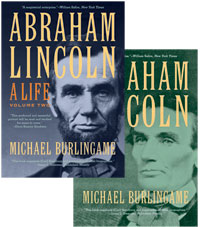Guest post by Ronald S. Coddington
From a collector’s perspective, there are two types of individuals in the world—those who do, and those who do not. I am in the former group. My first serious collection focused on baseball cards. Spurred by childhood exuberance for the national pastime, I amassed thousands and thousands of them, including the likes of Hank Aaron and other greats of the game.
In 1976, I came across an ad in Baseball Digest that proved irresistible. For one low price, I could purchase an entire set—all 660 mint condition cards, in chronological order, packed in a custom-sized cardboard box and shipped to your door. I immediately placed an order. The set arrived a few weeks later. The joy I experienced on opening the box was followed by a sense of loss. Now that I owned all the cards published that year, there was no need to buy individual packs of cards, or to trade with friends to build the set.
My baseball card collecting days were over.
By this time my family had caught the flea market bug. Every weekend, weather permitting, my parents, with my two brothers and me in tow, visited these outdoor extravaganzas across New Jersey and hunted for antiques and curios.
In the spring of 1977, at a flea market in Warrenville, NJ, I stopped at a table upon which was stacked a pile of old photograph albums. The deteriorated leather bindings had crumbled beyond repair, and pages were haphazardly strewn about. Many pages were empty. Some contained portrait photos, and they caught my attention. I carefully studied the century-old images. The faces of men, women, and children stared back through what I imagined to be a sepia-toned window of time.
These few minutes spent poring over the broken albums marked the beginning of a lifelong journey to collect vernacular photography of the Civil War period.
I purchased one of the images, a man dressed in a Union uniform. The dealer gave me the entire album page, and it provided the only link to the identity of the subject. Upon the margin of the page was neatly written in
period handwriting “George Garlick.”
I learned more about this Union man—my first Civil War veteran research project. Born George W. Garlick in New York, he served in the wartime navy on the Mississippi River as an acting ensign on the ironclad gunboat Pittsburgh. He survived the war, settled in Chicago, and lived until 1915.
I also learned that the 5 x 7-inch image of Garlick was a cabinet photograph, a format introduced in 1866 and popular until the early 1900s. The cabinet photo of Garlick was made in Chicago during the 1870s, a copy-print of a portrait taken during the war.
The original photograph of Garlick was probably a carte de visite, or visiting card. Developed in France in 1854, these paper prints arrived in America as storm clouds of war settled over the country. “Cartomania” swept the States. Albums filled with cartes de visite could be found at Southern plantations and in the mansions of Northern industrialists. The popularity of card photographs prompted Oliver Wendell Holmes to declare them, “the social currency, the sentimental ‘greenbacks’ of civilization.”
The standard carte de visite, 2.5 x 4 inches, is similar in size to a modern baseball card. Nowadays, collectors refer to them as CDVs.
It is perhaps due to the resemblance to baseball cards that this format quickly became my favorite. The little images, moving portraits of a generation of young men who participated in a bloody civil war, are the primary visual record of the citizen soldier. These forgotten volunteers fought with musket and saber for four years, and their actions brought to a resolution constitutional questions that politicians had struggled to settle for decades before the bombardment of Fort Sumter divided the nation.
Millions of cartes de visite survive today. Search eBay for the keywords “civil war cdv,” and you’ll find more than 300 up for auction at any given moment. Winning bids range from a dollar for an unidentified civilian to a thousand dollars and more for famous generals. Countless other CDVs are likely tucked away in attics, trunks, and other places just waiting to be discovered by photo historians and others who appreciate their uniqueness and value as a historical record.
These images are part of an unofficial set that can never be purchased all at once—a series never to be completed. And that pleases this onetime baseball card collector to no end.
 Ronald S. Coddington is assistant managing editor at the Chronicle of Higher Education. His work has appeared in USA Today, the Atlanta Journal-Constitution, and the San Jose Mercury News. He is a contributing writer to the New York Times’ Disunion series and writes a monthly column for Civil War News. He is the author of Faces of the Confederacy and Faces of the Civil War, and his latest book, African American Faces of the Civil War, is due out this fall. All are published by the JHU Press.
Ronald S. Coddington is assistant managing editor at the Chronicle of Higher Education. His work has appeared in USA Today, the Atlanta Journal-Constitution, and the San Jose Mercury News. He is a contributing writer to the New York Times’ Disunion series and writes a monthly column for Civil War News. He is the author of Faces of the Confederacy and Faces of the Civil War, and his latest book, African American Faces of the Civil War, is due out this fall. All are published by the JHU Press.
(The views expressed in this guest post belong to the author and in no way reflect the official opinion of the JHU Press.)



